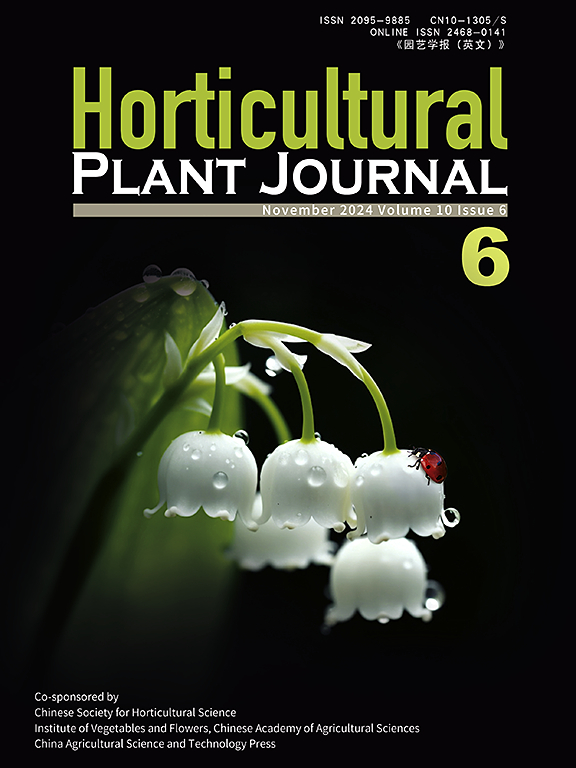GWAS-driven gene mining and genomic prediction of ornamental traits in flowering trees: A case study of Camellia japonica
IF 5.7
1区 农林科学
Q1 HORTICULTURE
引用次数: 0
Abstract
Floral traits largely determine the ornamental value of horticultural plants, while the long juvenile period of woody plants hinders the progress of the floral pattern and color breeding. The population genetic variations in the floral characters of cultivated camellias are far less well understood and applied. Here, we investigated genetic architecture and genome prediction of the floral pattern and color ingwas驱动的开花树木观赏性状基因挖掘与基因组预测——以山茶为例
花性状在很大程度上决定了园艺植物的观赏价值,而木本植物幼龄过长阻碍了花色育种的进展。栽培山茶花性状的群体遗传变异还远远没有得到很好的理解和应用。本文研究了山茶(Camelia japonica)花型和花色的遗传结构和基因组预测。采用超高效液相色谱-质谱联用技术,从200个茶花品种中鉴定出7种花青素。Cy3G和Cy3GEpC的含量和比例变化是导致颜色变化的主要原因。共鉴定出2 072 667个snp,群体结构分析显示品种间基因浸润频繁。全基因组关联研究(GWAS)和转录组分析分别鉴定出163个和46个与花的颜色和图案显著相关的共享基因。利用线性核和前1000个和前10000个GWAS相关标记进行支持向量机(SVM)回归,对花瓣数和花青素含量的预测准确率最高,分别为94%和95%。本研究为花性状的遗传基础提供了新的认识,并证实了利用机器学习和GWAS标记预测花性状的可行性,这将加速粳稻观赏分子育种的发展。
本文章由计算机程序翻译,如有差异,请以英文原文为准。
求助全文
约1分钟内获得全文
求助全文
来源期刊

Horticultural Plant Journal
Environmental Science-Ecology
CiteScore
9.60
自引率
14.00%
发文量
293
审稿时长
33 weeks
期刊介绍:
Horticultural Plant Journal (HPJ) is an OPEN ACCESS international journal. HPJ publishes research related to all horticultural plants, including fruits, vegetables, ornamental plants, tea plants, and medicinal plants, etc. The journal covers all aspects of horticultural crop sciences, including germplasm resources, genetics and breeding, tillage and cultivation, physiology and biochemistry, ecology, genomics, biotechnology, plant protection, postharvest processing, etc. Article types include Original research papers, Reviews, and Short communications.
 求助内容:
求助内容: 应助结果提醒方式:
应助结果提醒方式:


